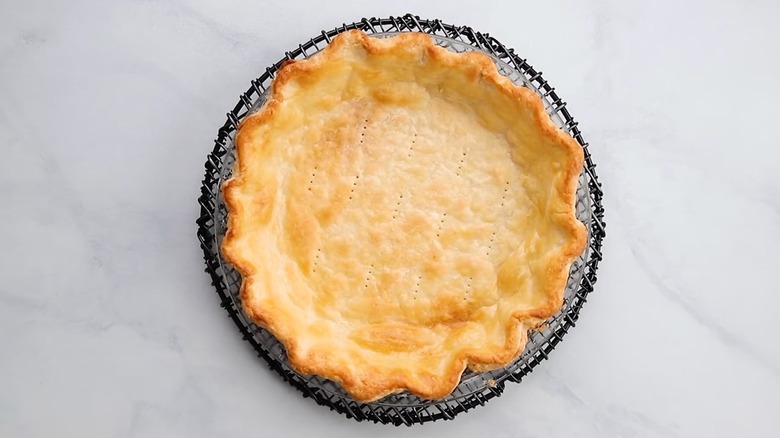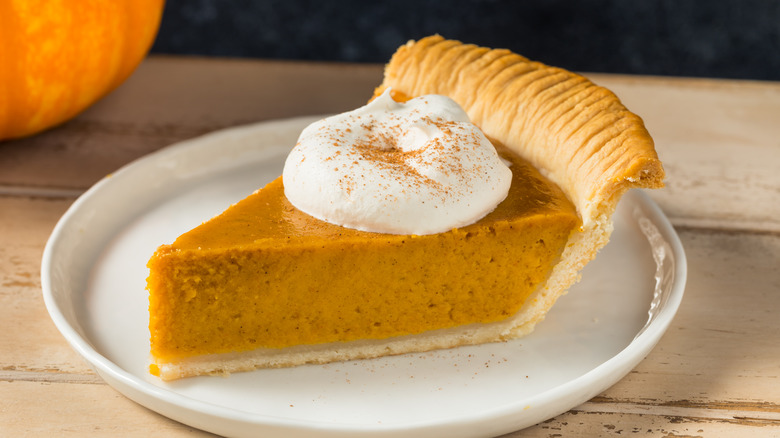The Blind Baking Hack That Will Make The Perfect Pie Crust
The biggest mistake you can make when blind baking pie crust is not weighing it down; if you don't, cracking or shrinking may occur. Fortunately, some bakers out there have developed a hack that goes beyond lining the dough with parchment and filling it with beans. This bean trick (or rice trick, coin trick, etc.) is good, but it leaves the pie's sides with no support and might not provide enough weight to prevent air bubbles from forming.
To keep the pie secure on all sides during a blind bake, cover the dough with another pie pan. Since this alone probably won't be heavy enough, flip the pie upside down and add a baking sheet (or two) on top; the inverted pie pans give the baking sheet some extra surface area to rest upon. The resulting pie crust will be one with an even, sturdy shape and no bubbles or fractures in sight.
What kind of pies need a blind bake?
No-bake pies aren't the only ones that require a blind-baked crust. Other types can benefit from the technique because it helps prevent a soggy bottom. For example, one of the ways you might be screwing up your pumpkin pie is by not blind-baking the crust before the whole thing goes in the oven. A wet filling on raw dough leads to a soggy crust, whereas a baked crust will already be nice and crisp before you pour in the wet filling.
If you're concerned about overbaking your crust by putting it in the oven twice, utilize the partial blind bake technique (i.e., don't bake the crust all the way). A partially done crust helps ensure it bakes synchronously with the filling later on.
Speaking of overbaking, always keep an eye on the crust's rim, as it's the only part directly exposed to the oven's hot air. To prevent burning (especially after blind baking), wrap the rim in aluminum foil, which will protect it from the harsh heat.

